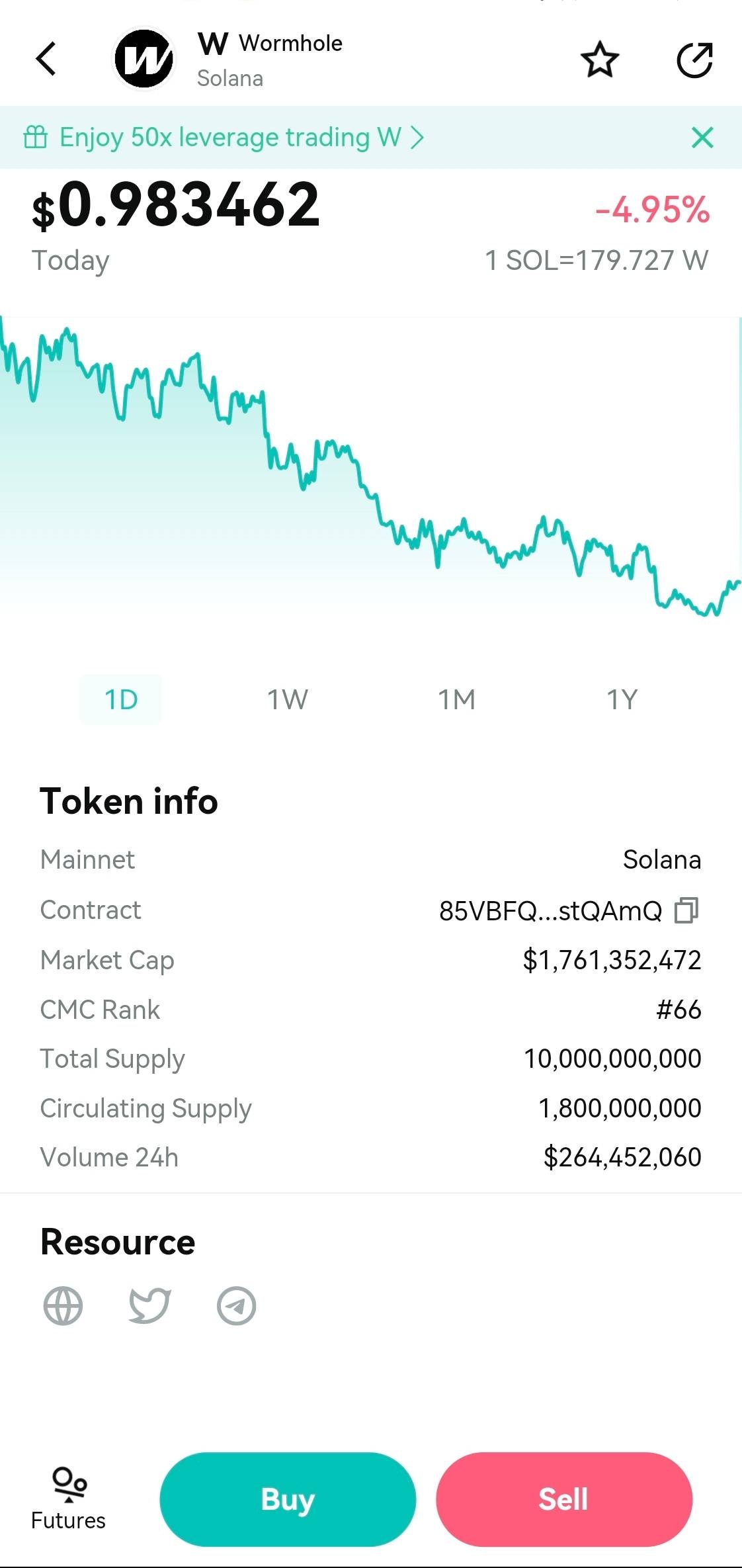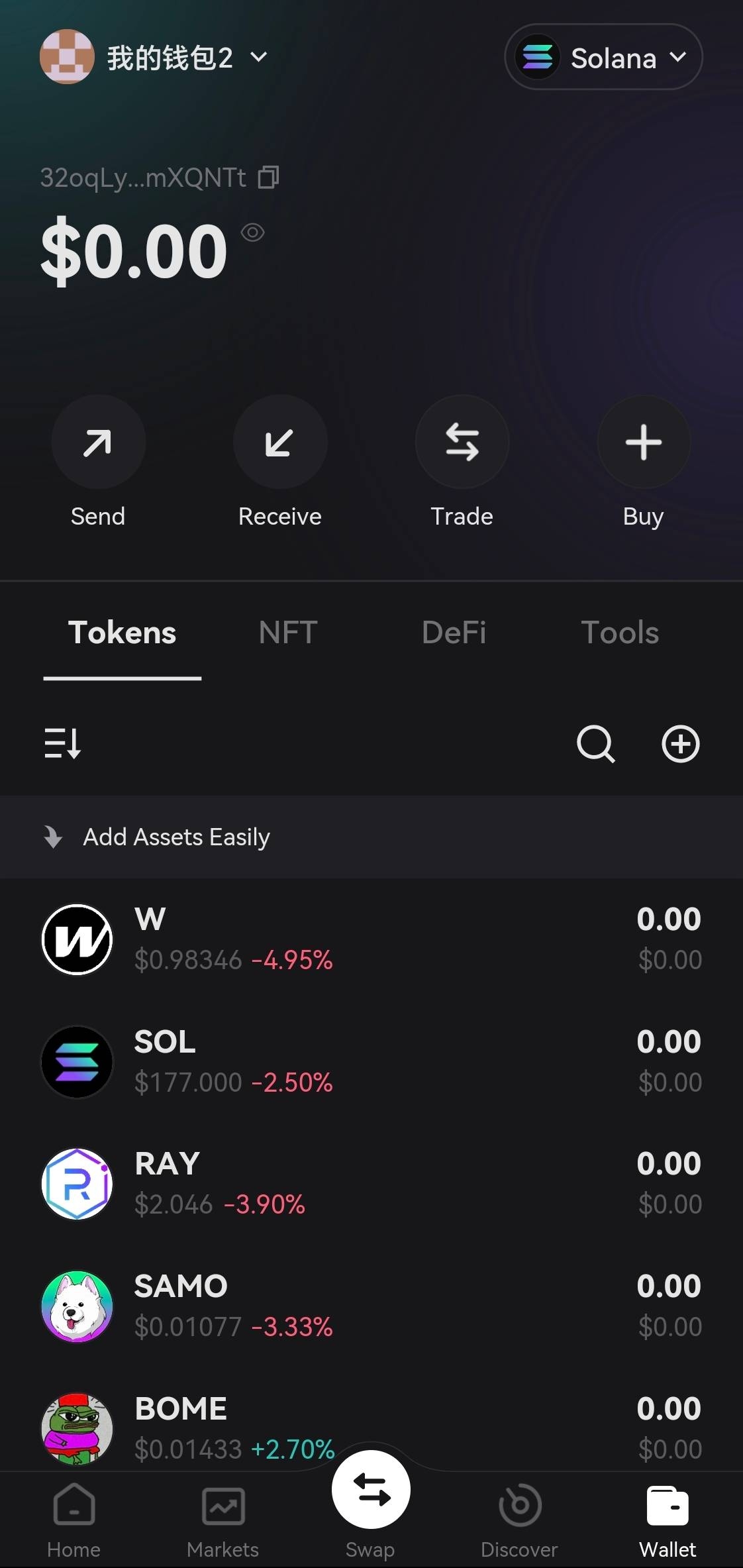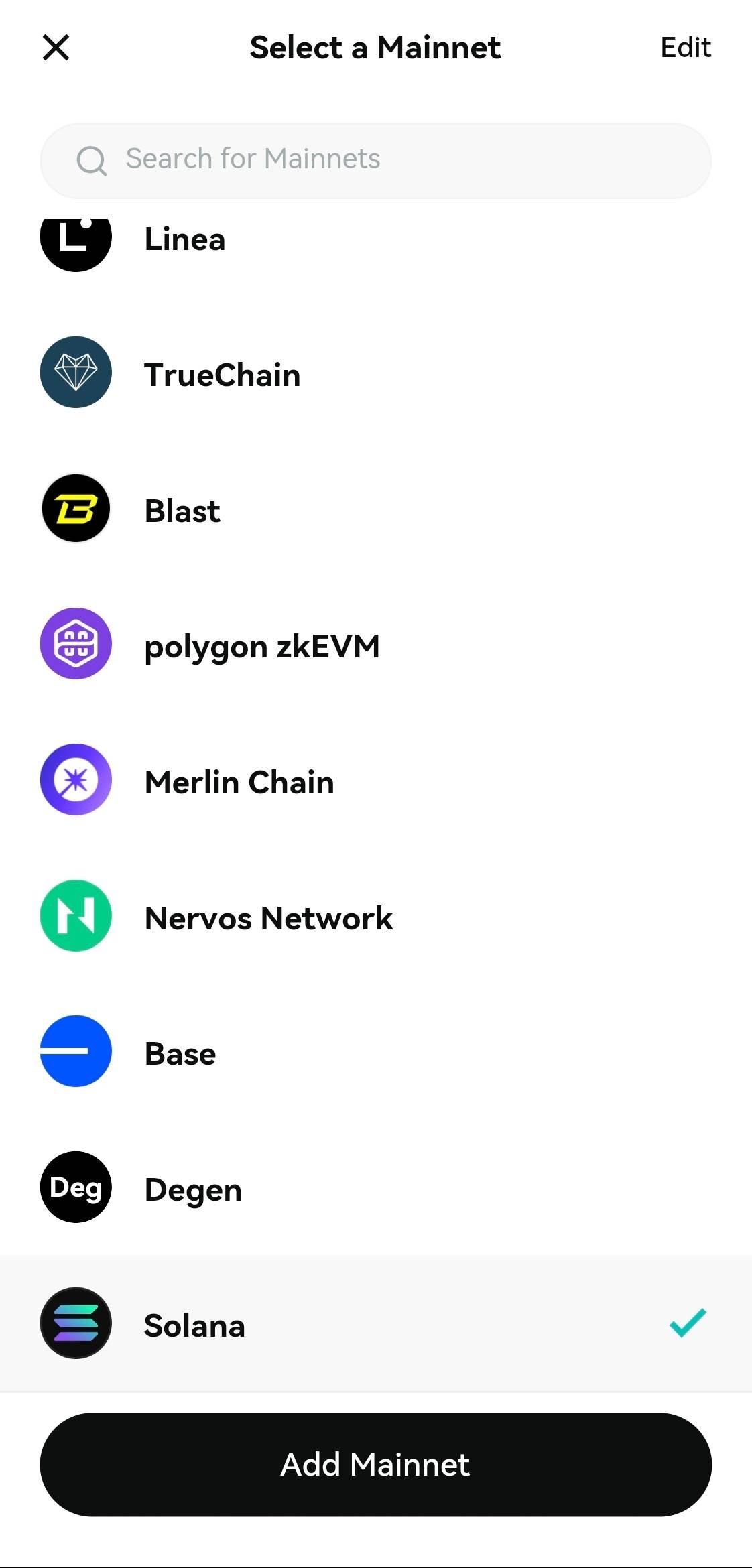
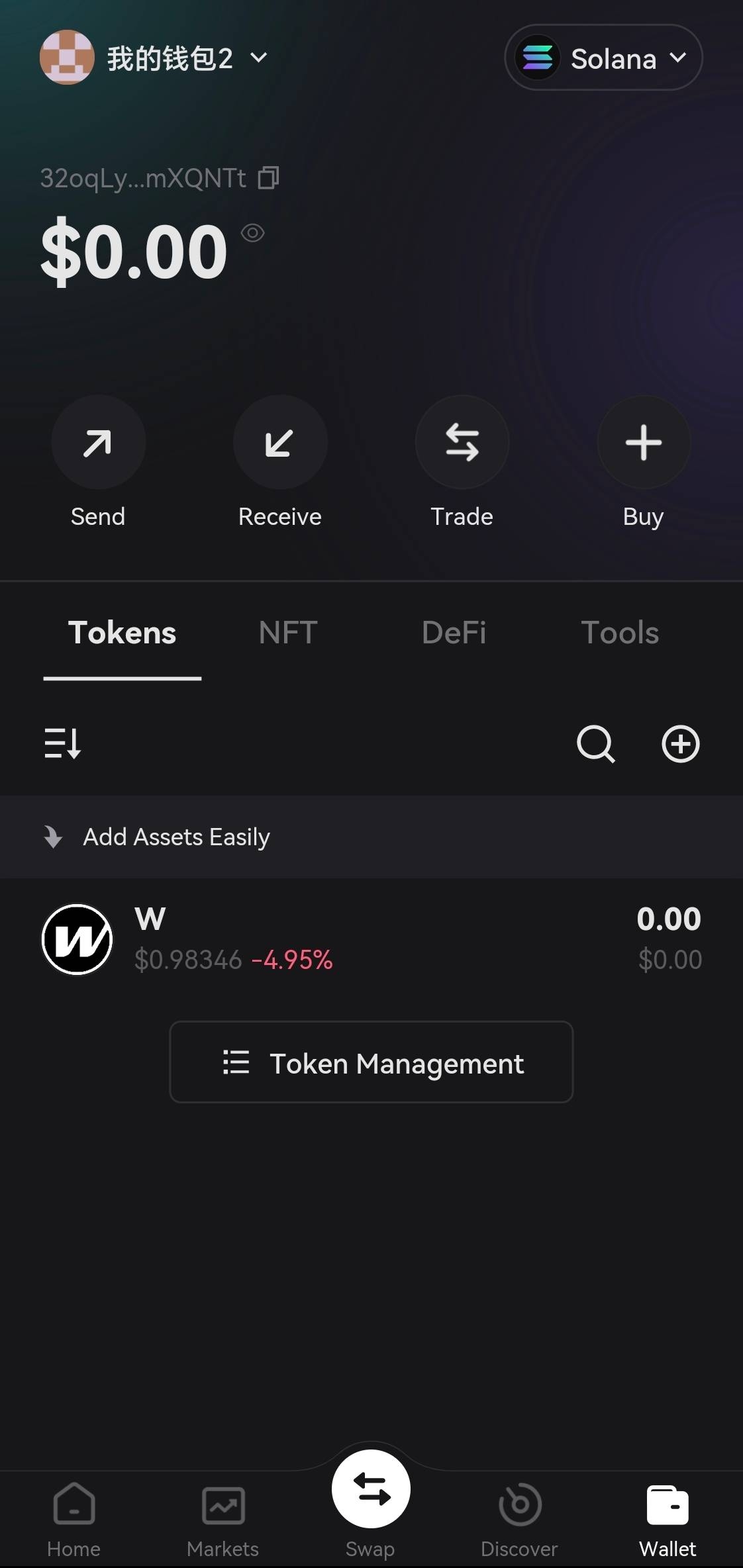
How to Create a Wormhole Wallet in Bitget Wallet
- 1. Create or import a wallet
- 2. Choose to “Add a mainnet”
- 3. Choose “Solana Chain”
- 4. Return to the home page of Bitget Wallet to view the added mainnet and its native token
You can also use our OTC feature to buy USDT/USDC with Fiat currency and then swap for other tokens.
Bitget Wormhole Wallet Features
Swap on Wormhole Wallet
Bitget Wallet Swap has the most inclusive Wormhole market intelligence, including: Real-time Quote, Token Price Chart (where users can choose to view by Day, Week, Month, or Year), Token Contract, Market Cap, Circulating Supply, Holders, transaction histories, data analysis. In addition, Bitget Wallet Swap supports Wormhole's InstantGas Swap service, which allows you to exchange your existing Wormhole assets to any token you want even when you don't have any Wormhole on hand.
Visit Bitget Swap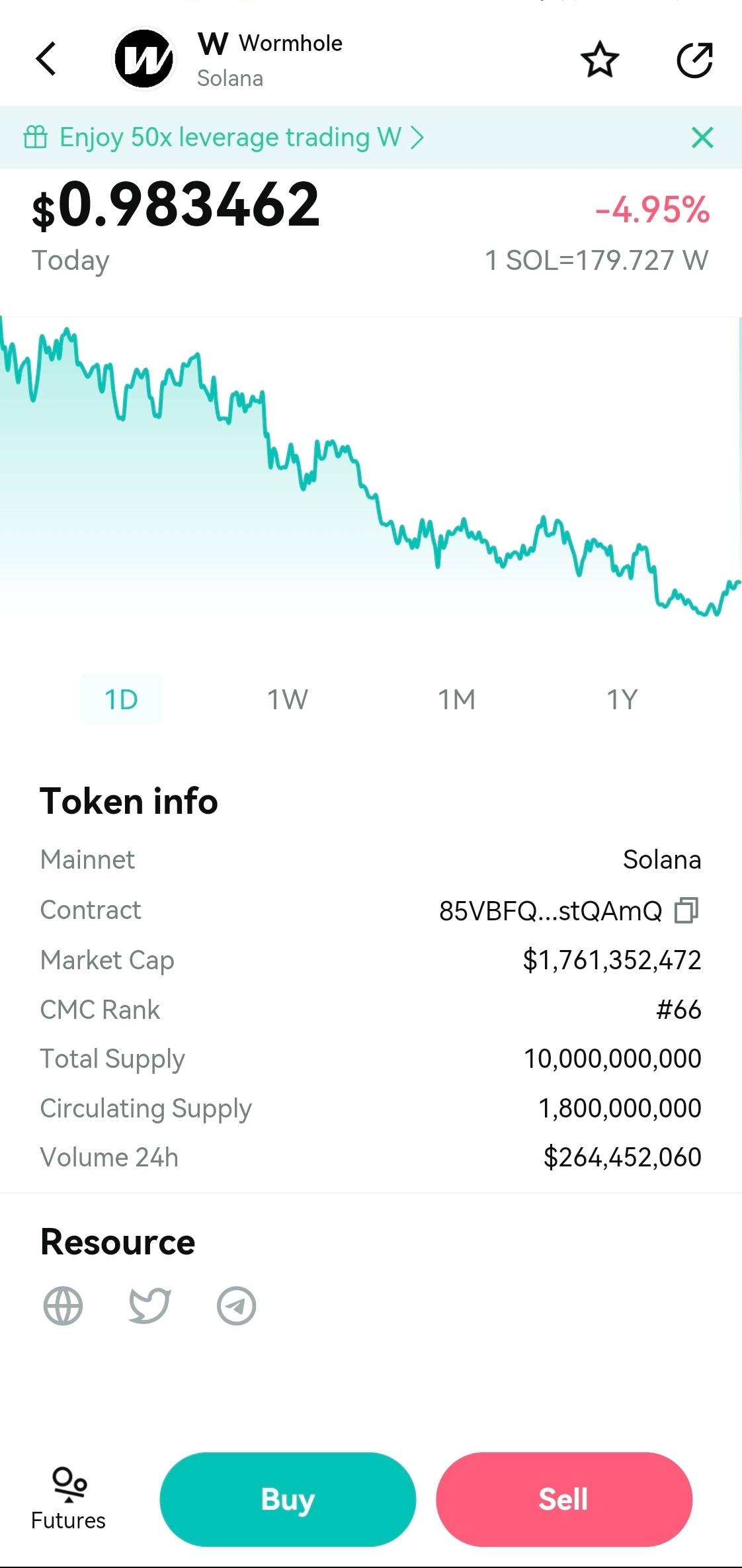
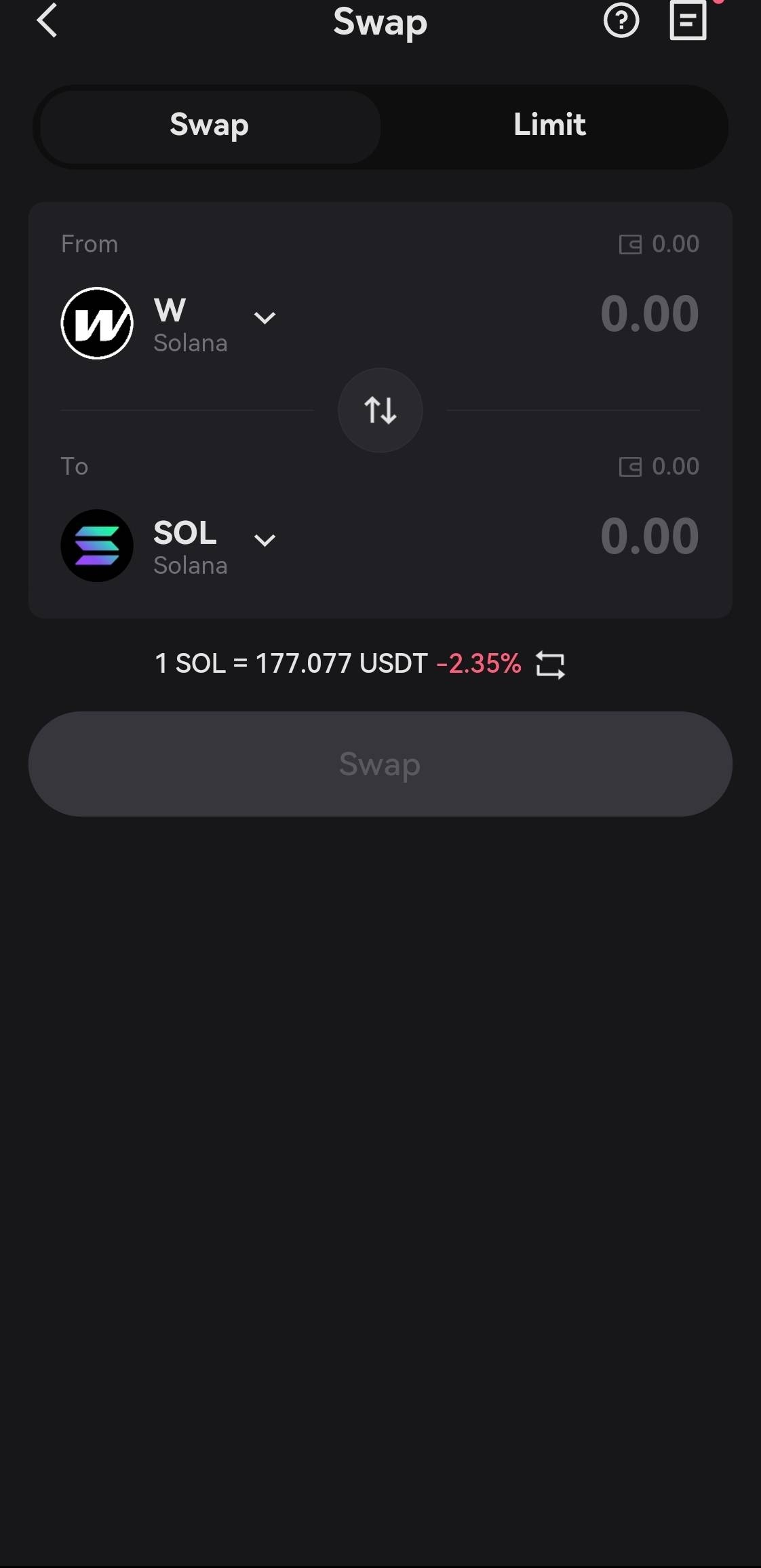
FAQ
How to buy Wormhole? 

What's the best Wormhole Wallet? 

How do you download Bitget Wallet and create a Wormhole Wallet? 


What is Wormhole?
What is Wormhole?
Wormhole is a cross-chain bridge protocol designed to enable seamless transfer of assets and data between different blockchains. Think of it as a highway system connecting major blockchains like Ethereum, Solana, Binance Smart Chain, and others. This connectivity breaks down traditional blockchain silos, allowing users to move their crypto assets, NFTs, and even smart contract instructions across chains. Wormhole aims to unlock new possibilities within the DeFi landscape. For example, it could allow users to utilize the strengths of different blockchains, such as Ethereum's established DApp ecosystem and Solana's speed and low transaction costs. Wormhole plays a crucial role in expanding the interconnected world of crypto, pushing towards a future where different blockchains can work together seamlessly.
What makes Wormhole unique?
Wormhole distinguishes itself within the competitive cross-chain bridge landscape through several key features. Firstly, its emphasis on supporting a wide variety of major blockchains, including Ethereum, Solana, Binance Smart Chain, Polygon, and others, sets it apart. This extensive reach unlocks a vast array of potential cross-chain use cases within DeFi, empowering users to leverage the best features of different ecosystems. Secondly, Wormhole's ability to potentially handle not just cryptocurrencies, but also NFTs and even smart contract instructions, expands its utility beyond simple token transfers. This could lead to innovative cross-chain applications and interactions. Furthermore, Wormhole utilizes a decentralized network of "guardian nodes" to monitor and validate cross-chain transactions. This approach aims to reduce reliance on single points of failure and potentially enhance security compared to more centralized bridge models. Additionally, some articles suggest that Wormhole could incorporate a degree of community participation in its development roadmap. While details on this aspect are still emerging, focusing on community input could further differentiate it within the evolving cross-chain space. However, it's crucial to acknowledge the inherent complexities and security risks often associated with cross-chain bridges. Understanding Wormhole's security measures in detail is vital before utilizing its services. Additionally, the technology behind cross-chain solutions is in a constant state of development. Wormhole's long-term success hinges on its ability to remain secure, adapt to innovation, and maintain its extensive blockchain support within a fast-paced and competitive environment.
What is the future potential of Wormhole?
Wormhole's future potential is closely intertwined with the broader evolution of blockchain interoperability. If the demand for seamless interactions between different blockchains continues to grow, projects like Wormhole could play a pivotal role. Its focus on supporting numerous major blockchains positions it well to capitalize on this trend. By enabling the free flow of assets and data across chains, Wormhole could unlock new DeFi strategies, create more efficient markets, and fuel the development of innovative DApps that leverage the best features of multiple blockchains. However, Wormhole faces significant challenges. The security of cross-chain bridges is a major concern, as past exploits have demonstrated. Wormhole must continuously prioritize security and stay ahead of potential threats to maintain user trust. Additionally, the cross-chain landscape is rapidly evolving, with new solutions and technologies emerging. Wormhole's ability to adapt, innovate, and potentially expand its supported blockchains will be crucial for its long-term success. Overall, Wormhole's future holds both promise and uncertainty. The growing desire for a more interconnected blockchain ecosystem could propel its adoption if it can maintain security and flexibility. However, addressing the security risks inherent to cross-chain technologies and navigating a highly competitive landscape are challenges it must overcome to achieve its full potential.
Which crypto narrative does Wormhole leverage?
Wormhole strongly resonates with the crypto narrative of blockchain interoperability. Its core function of enabling seamless asset and data transfers between different blockchains aligns with the vision of a more interconnected and user-friendly crypto landscape. Additionally, Wormhole's potential to unlock new possibilities within DeFi highlights its role within the ongoing DeFi revolution. By allowing users to move assets between chains, it could lead to innovative yield generation strategies, cross-chain lending and borrowing platforms, and other DeFi applications that were previously impossible. Furthermore, Wormhole subtly touches upon emerging narratives surrounding decentralized governance and community participation. If its development incorporates a significant degree of community input, it could exemplify the increasing trend of users having a voice in shaping the platforms they use.



